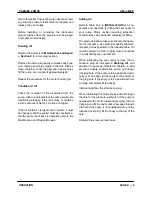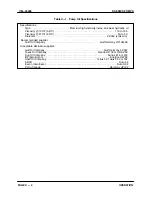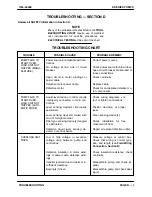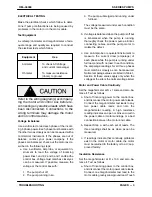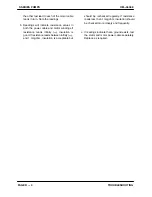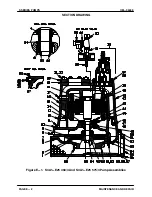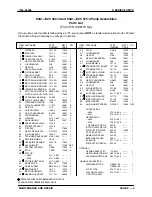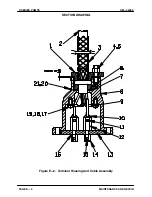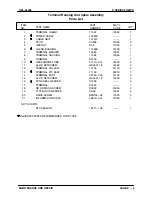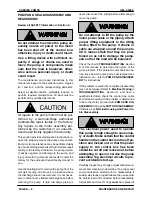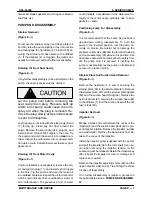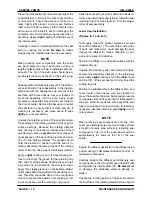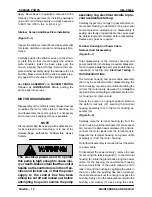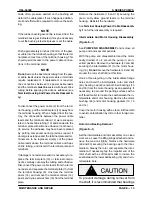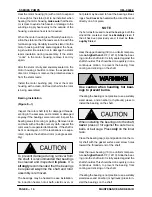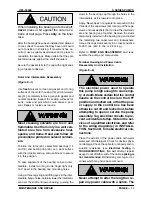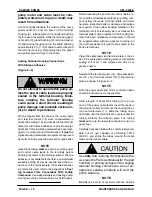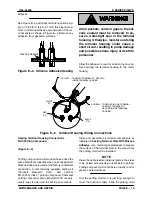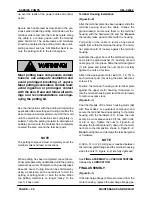
OM-06098
S SERIES PUMPS
PAGE E - 9
MAINTENANCE AND REPAIR
Inspect the rotor shaft (40) for damaged threads,
scoring, or nicks. Remove nicks and burrs with a
fine file or hand honing stone to restore original
contours. If the shaft is bent or severely damaged,
the rotor and shaft must be replaced as an assem
bly (see
MOTOR DISASSEMBLY
).
Neither of the shaft seal assemblies (3 or 4) should
be reused because wear patterns on the finished
faces cannot be realigned during reassembly. This
could result in premature failure. If necessary to re
use an old seal in an
emergency
,
carefully
wash
all metallic parts in fresh cleaning solvent and allow
to dry thoroughly.
Handle the seal parts with extreme care to prevent
damage. Be careful not to contaminate the preci
sion finished faces; even fingerprints on the faces
can shorten seal life. If necessary, clean the faces
with a non‐oil based solvent and a clean, lint‐free
tissue. Wipe
lightly
in a circular pattern to avoid
scratching the faces.
Inspect the seal components for wear, scoring,
grooves, and other damage that might cause leak
age. If any components are worn, replace the com
plete seal;
never mix old and new seal parts.
Install the shaft seals as illustrated in Figure E-3.
STATIONARY
SEAL SEAT
SPRING
IMPELLER
BELLOWS AND
RETAINING ASSY
ROTOR
SHAFT
ROTATING
ELEMENT
STATIONARY
ELEMENT
SEAL
RETAINING RING
DIFFUSER
STATIONARY
SEAL SEAT
SPRING
BELLOWS AND
RETAINING ASSY
IMPELLER
WASHER
ROTATING
ELEMENT
SPRING
RETAINER
O‐RING
STATIONARY
ELEMENT
SHIM SET
O‐RING
Figure E-3. Upper And Lower Seal Assemblies
This seal is not designed for operation at
temperatures above 122
F (50
C). Do not
use at higher operating temperatures.
Upper Seal Installation
(Figures E-1 and E-3)
Do not
unwrap a new seal assembly until time of
installation. Cleanliness of seal components is criti
cal, especially the seal faces.

